Imagine stepping into your backyard, where the air is filled with the rich aroma of grilled delights and the laughter of loved ones gathered around a beautifully set table. Whether you’re just beginning your journey into outdoor living or you’re a seasoned pro looking to refresh your space, “14 Outdoor Dining Ideas for Your Next Project” is your roadmap to creating memorable moments under the open sky. This guide is packed with inspiration and practical tips to help you craft a dining area that reflects your style and enhances your outdoor experience.
In this collection, you’ll discover ideas that range from cozy, intimate settings to expansive, grand designs, all aimed at elevating your outdoor gatherings. By exploring these diverse concepts, you’ll gain the confidence to transform any outdoor area into a charming dining oasis that fits your lifestyle and needs. Let’s dive in and unlock the joy and rewards of outdoor living spaces that are as functional as they are beautiful.
Choose Weather-Resistant Dining Furniture
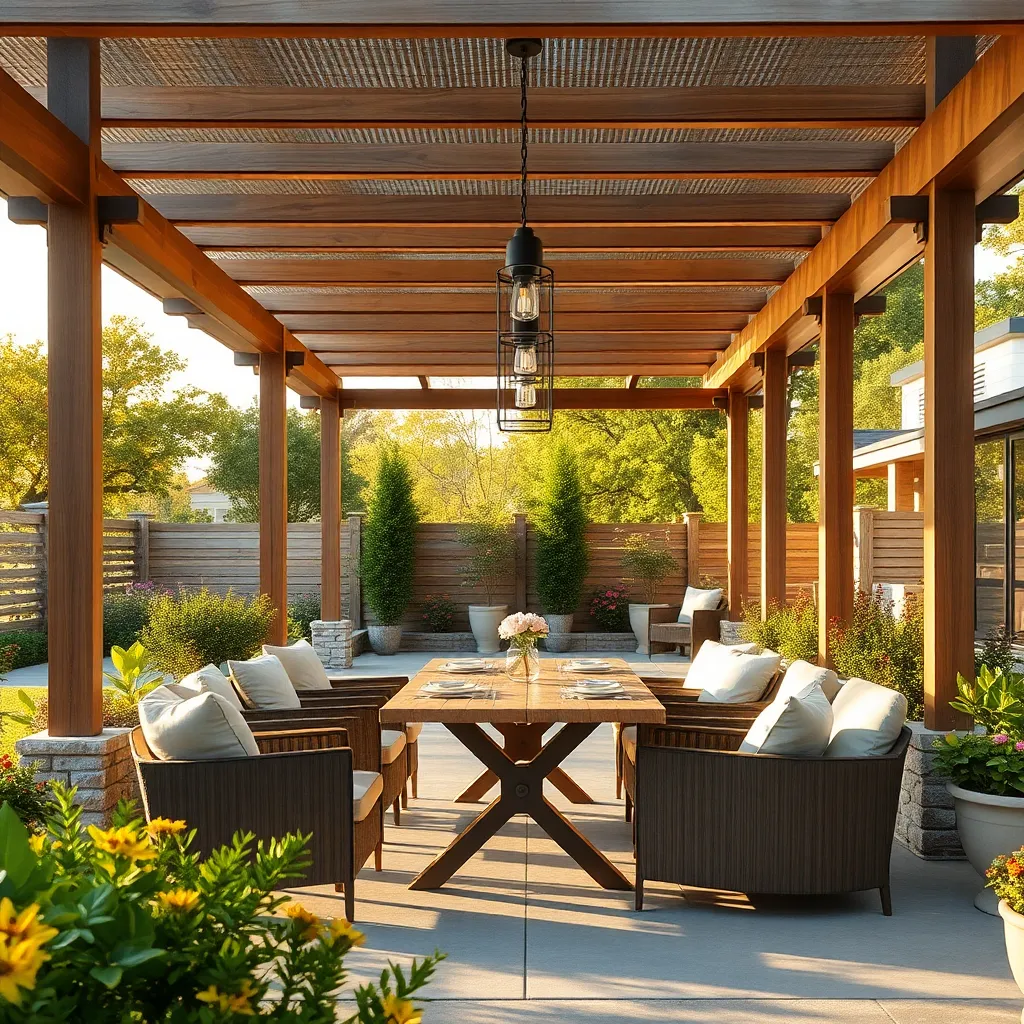
When choosing weather-resistant dining furniture for your outdoor space, focus on materials that can withstand the elements. Teak, powder-coated aluminum, and high-density polyethylene (HDPE) wicker are excellent choices, thanks to their durability and low maintenance requirements. For beginners, a teak table paired with aluminum chairs offers a classic look that’s both stylish and robust, while seasoned gardeners might explore custom HDPE designs for a modern twist.
Consider incorporating design elements that enhance both functionality and style in your dining area. Opt for furniture with built-in drainage to prevent water pooling, and select cushions made from quick-dry foam and weatherproof fabrics like Sunbrella. For those looking to add an advanced touch, consider modular furniture pieces that can be rearranged easily, providing flexibility for different occasions. Remember, the right furniture can transform your outdoor dining experience into a seamless blend of comfort and elegance.
Incorporate Built-In Seating Options
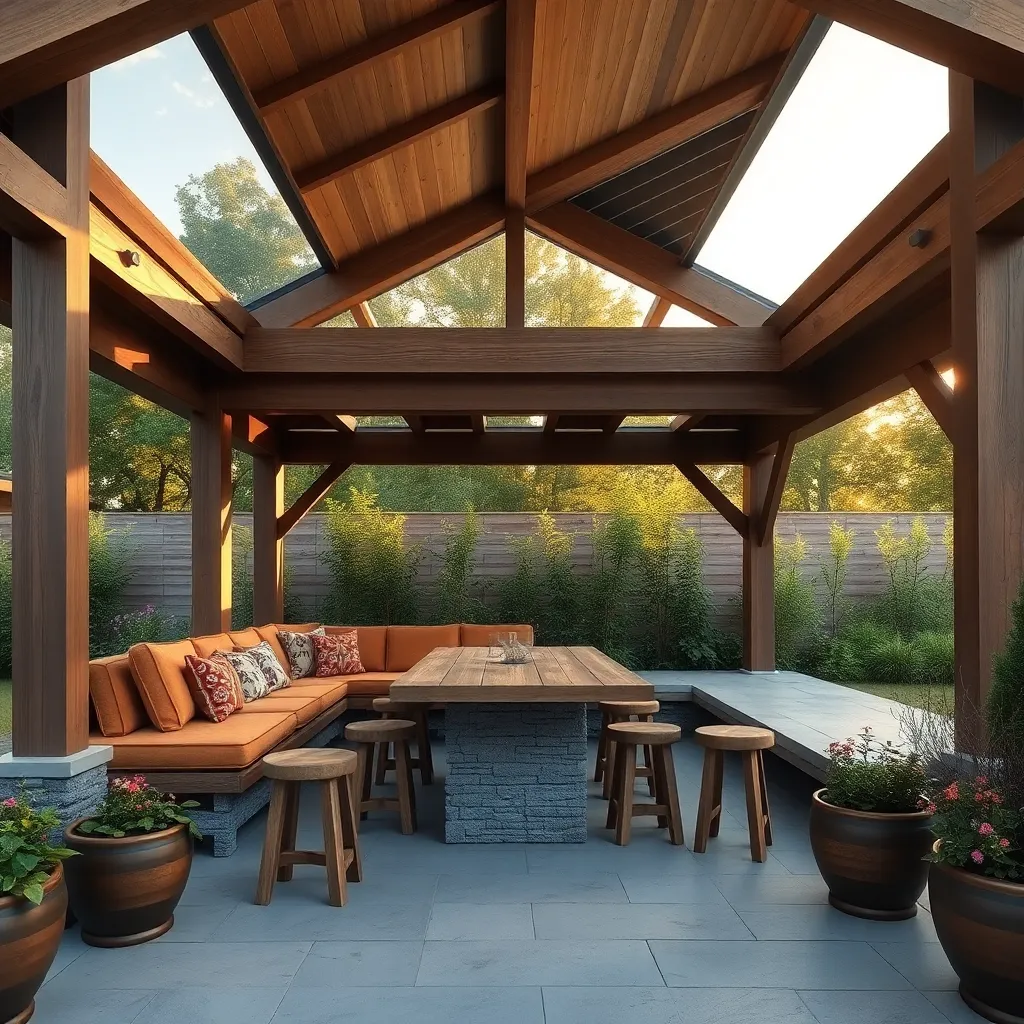
Incorporating built-in seating options can greatly enhance the functionality and aesthetics of your outdoor dining area. Consider using durable materials like treated wood or composite decking to withstand the elements and ensure longevity. A simple L-shaped bench along the perimeter of your space not only maximizes seating but also helps define the dining area. For a more custom look, add cushions made from weather-resistant fabric to provide comfort and a pop of color.
For those looking to add a touch of sophistication, integrated storage beneath the seating can be a game-changer. This dual-purpose solution optimizes space by providing a spot to stash outdoor essentials like cushions, tableware, or children’s toys. Advanced builders might incorporate a backrest with built-in lighting or planters for added ambiance. Whether you’re a beginner or seasoned DIY enthusiast, these built-in seating options offer practical and stylish solutions to elevate your outdoor dining experience.
Utilize Space-Saving Foldable Tables
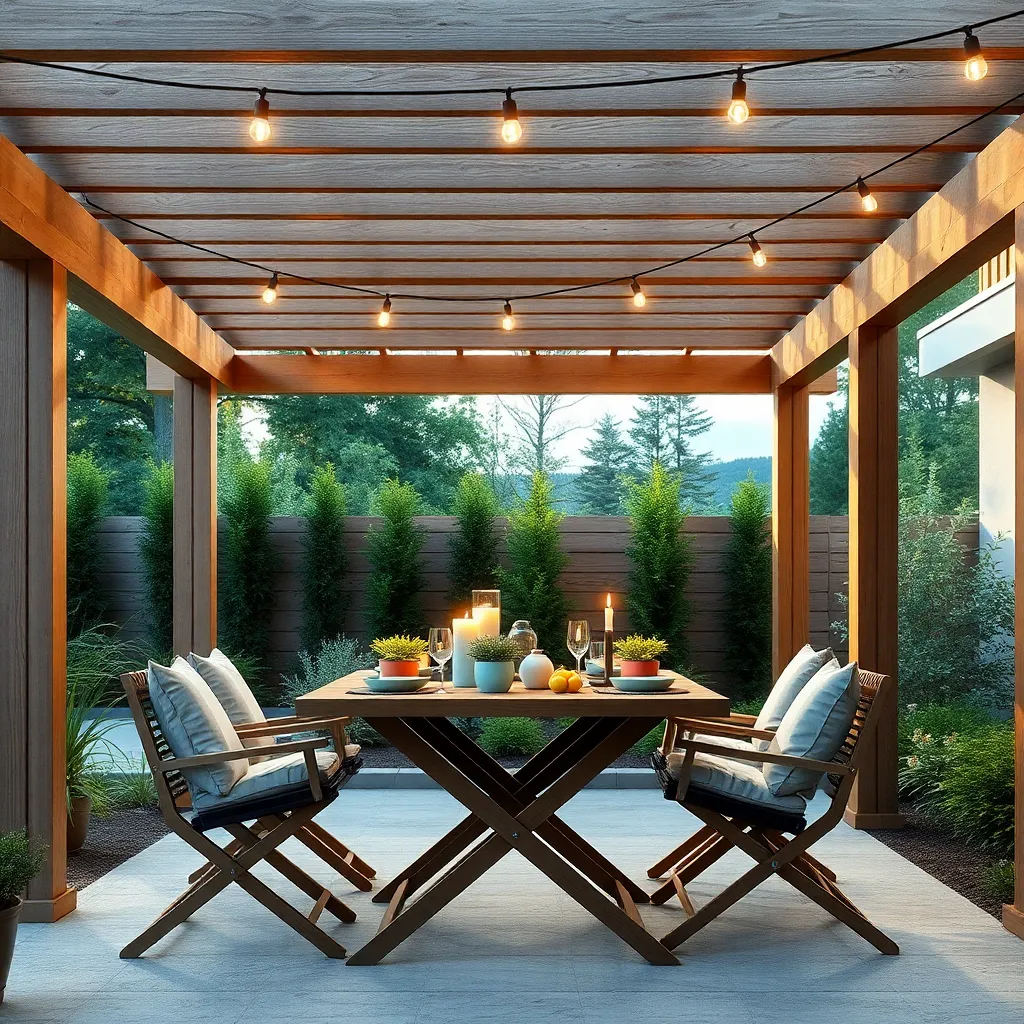
Foldable tables are a fantastic way to maximize space in your outdoor dining area, especially if you have limited room. Opt for tables made from durable materials like teak, powder-coated steel, or high-density polyethylene, which can withstand various weather conditions. Choose designs that are easy to fold and store, allowing you to quickly transform your space when needed. For example, a round foldable table can serve as a cozy dining spot and be easily tucked away to create more open space for other activities.
For those looking to elevate their outdoor setup, consider tables with adjustable height settings, which can adapt to both dining and lounging needs. Advanced features such as built-in storage for tableware or foldable extensions can add versatility to your outdoor dining experience. When selecting a foldable table, ensure it complements the overall aesthetic of your space, whether you prefer a rustic, modern, or minimalist design. This approach not only maximizes functionality but also enhances the visual appeal of your outdoor area.
Install Retractable Awning Systems
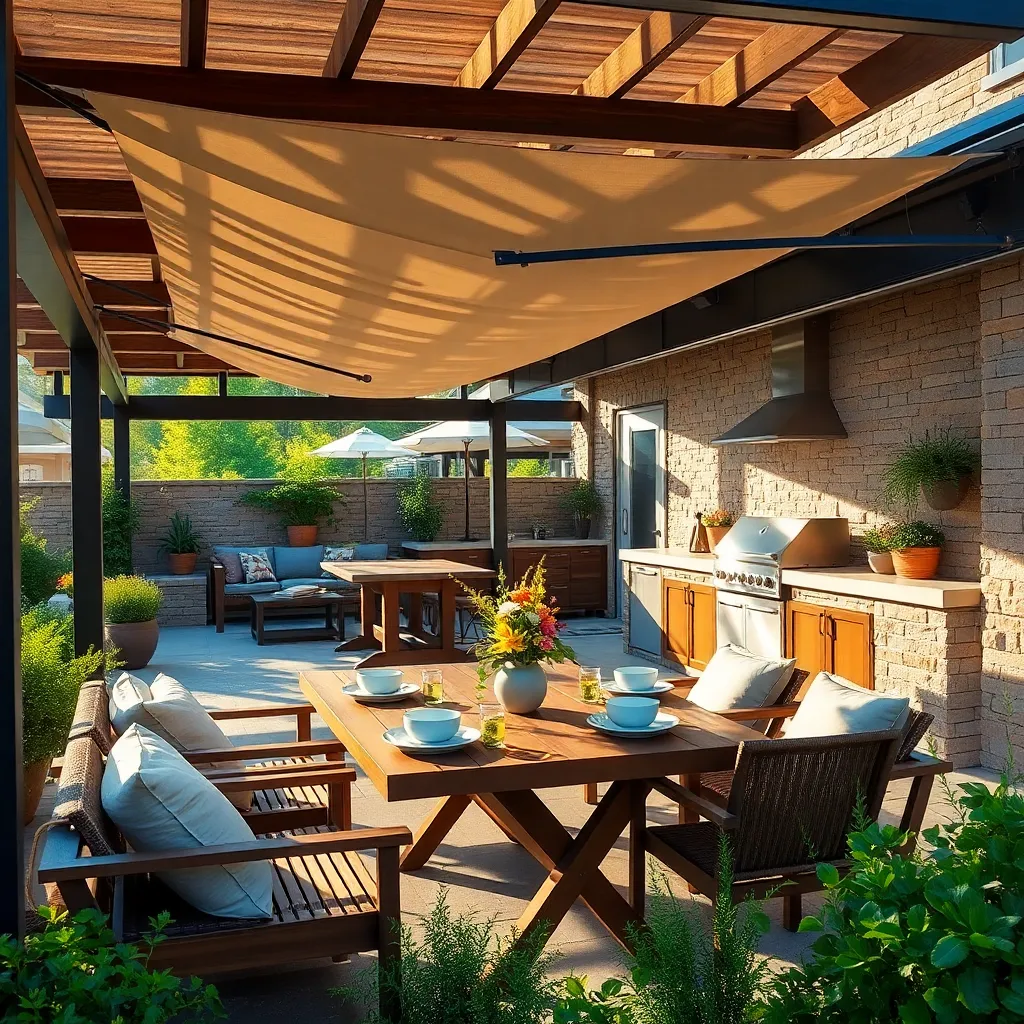
Enhance your outdoor dining area by installing a retractable awning system, offering both shade and style. These systems are ideal for creating a versatile space that adapts to changing weather conditions. Choose between manual or motorized options based on your budget and convenience level. For a durable and low-maintenance choice, consider materials like acrylic or polyester fabric, which are resistant to UV rays and mildew.
For a seamless installation, ensure the awning is securely attached to a sturdy structure, such as a wall or roof beam. It’s crucial to measure the area accurately, allowing at least a 2-foot clearance beyond your dining set to ensure adequate coverage. Consider incorporating wind sensors for automatic retraction during high winds, protecting your investment. Advanced tips include opting for a custom design that matches your home’s exterior, enhancing both aesthetic appeal and property value.
Add Cozy Fire Pit Features
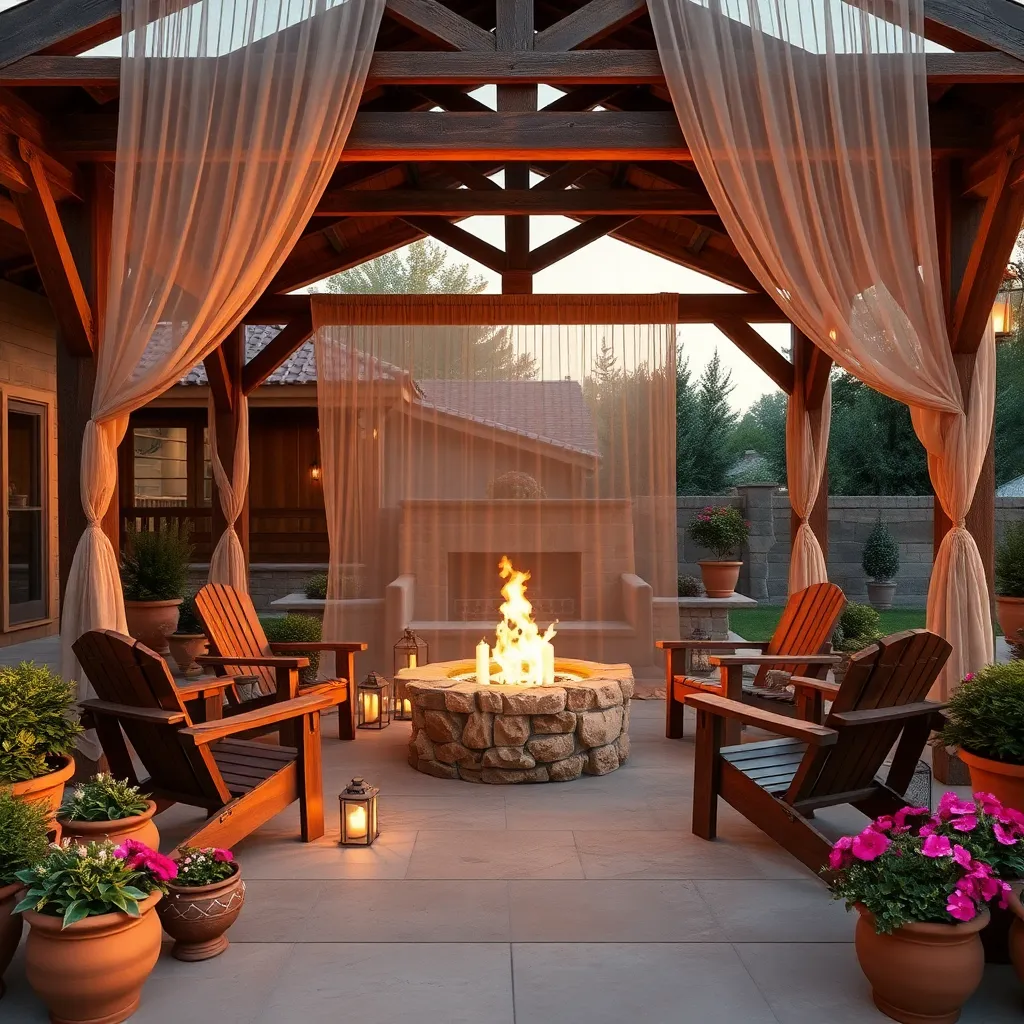
Creating a cozy fire pit area can transform your outdoor dining space into a warm retreat, perfect for evening gatherings. Start by choosing a suitable location that’s at least 10 feet away from any structures or overhanging branches. For a basic setup, consider a simple, portable fire pit; these are widely available and easy to use. For a more permanent option, build a custom fire pit using durable materials like stone or brick. Ensure your fire pit is surrounded by a non-flammable surface, such as gravel or pavers, to enhance safety and aesthetics.
For added comfort, arrange seating around the fire pit with weather-resistant cushions and throws to make the space inviting. Use materials like teak or powder-coated aluminum for furniture, as they withstand the elements well. To enhance the ambiance, incorporate lighting elements such as string lights or solar-powered lanterns. Consider adding a built-in wood storage area nearby to keep everything conveniently accessible and tidy. This setup not only enhances your outdoor dining experience but also extends the usability of your patio into cooler months.
Create Ambiance with String Lights
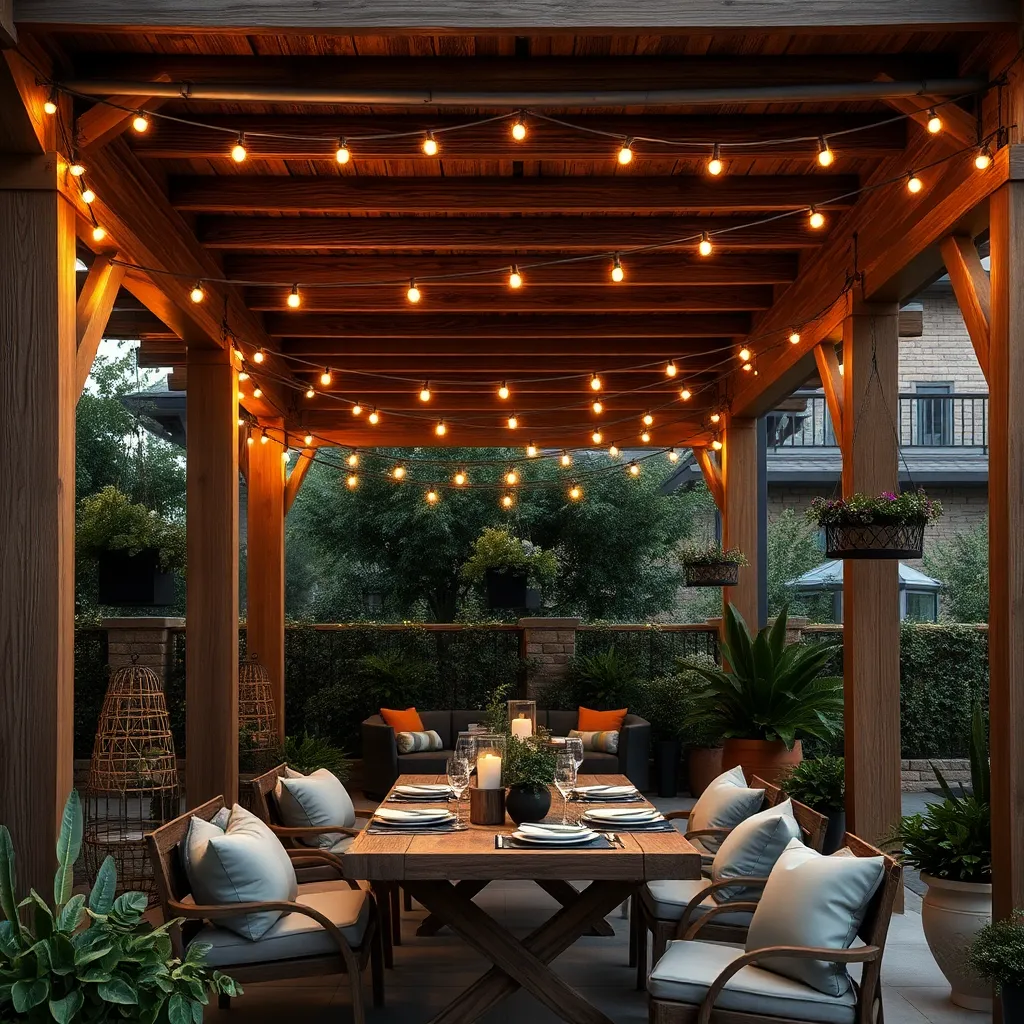
Enhance the ambiance of your outdoor dining area with the magic of string lights. Choose weather-resistant LED string lights for durability and energy efficiency, ensuring they withstand the elements throughout the seasons. Beginners can start by draping them around trees or along fences for a simple and elegant touch. For those looking to elevate their setup, consider creating a canopy effect by crisscrossing the lights overhead. This not only illuminates the dining space but also creates a cozy, intimate atmosphere perfect for evening gatherings.
For a polished look, use sturdy mounting hardware to secure the lights, ensuring they remain taut and well-positioned. Opt for commercial-grade light strands if your area experiences harsh weather conditions. Advanced DIY enthusiasts can install poles or build a pergola to support the lights, providing a more permanent and structured solution. Incorporating dimmer switches allows you to adjust the lighting intensity to suit different occasions, adding versatility to your outdoor setup. With these tips, you can transform your space into a welcoming retreat that encourages relaxation and enjoyment.
Select Durable Outdoor Fabrics
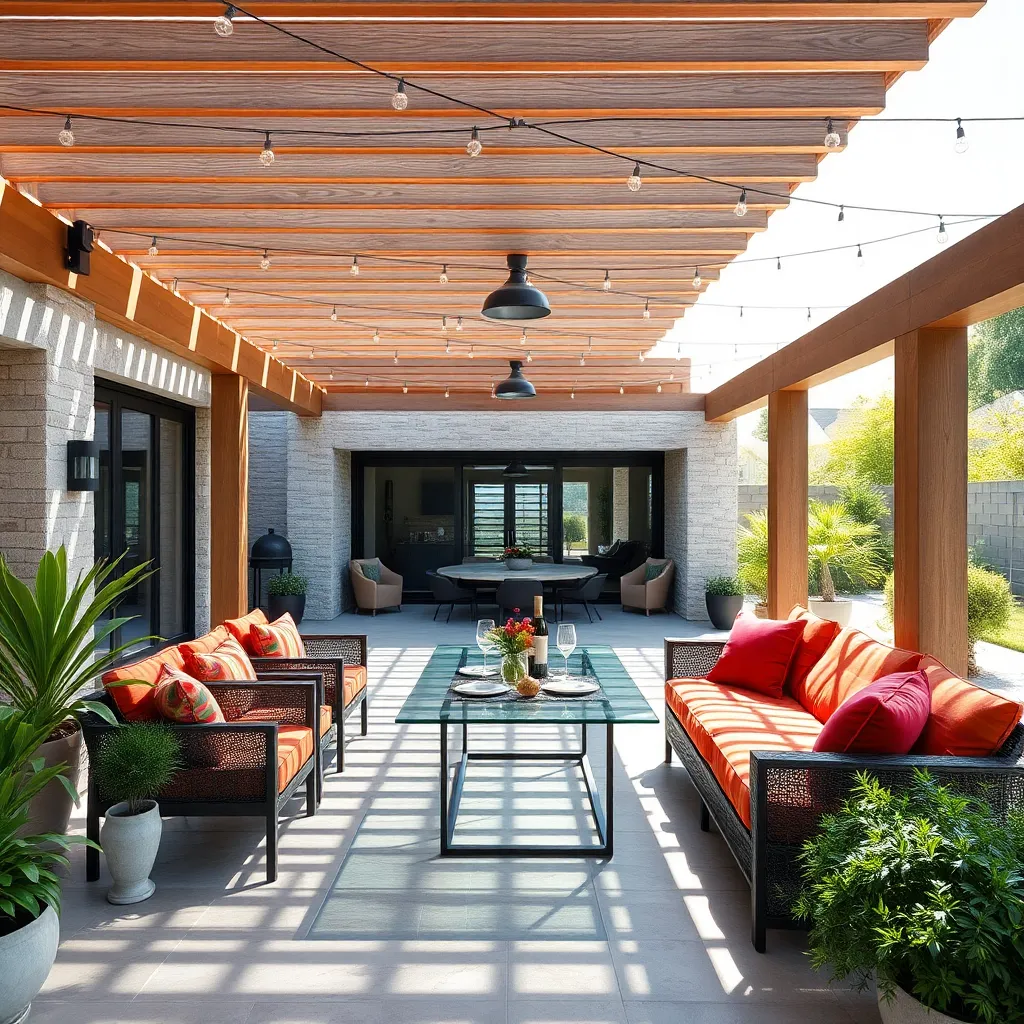
When selecting fabrics for your outdoor shelter, prioritizing durability is crucial. Look for materials like Sunbrella, which is known for its fade-resistant and weather-resistant properties. For a beginner-friendly option, consider polyester blends that offer a good balance of affordability and durability. To ensure longevity, choose fabrics with a high UV protection rating and water-repellent treatments, which can withstand various weather conditions while maintaining their vibrant colors.
Advanced gardeners might explore incorporating solution-dyed acrylic fabrics, which provide superior longevity and colorfastness even in harsh climates. When designing your outdoor dining area, consider adding removable covers for easy cleaning and maintenance. For extra flair, mix and match patterns and textures, such as striped or floral designs, to create a visually appealing and cohesive space. By focusing on these materials, you can create an inviting and resilient outdoor shelter that enhances your dining experience.
Implement Vertical Garden Walls
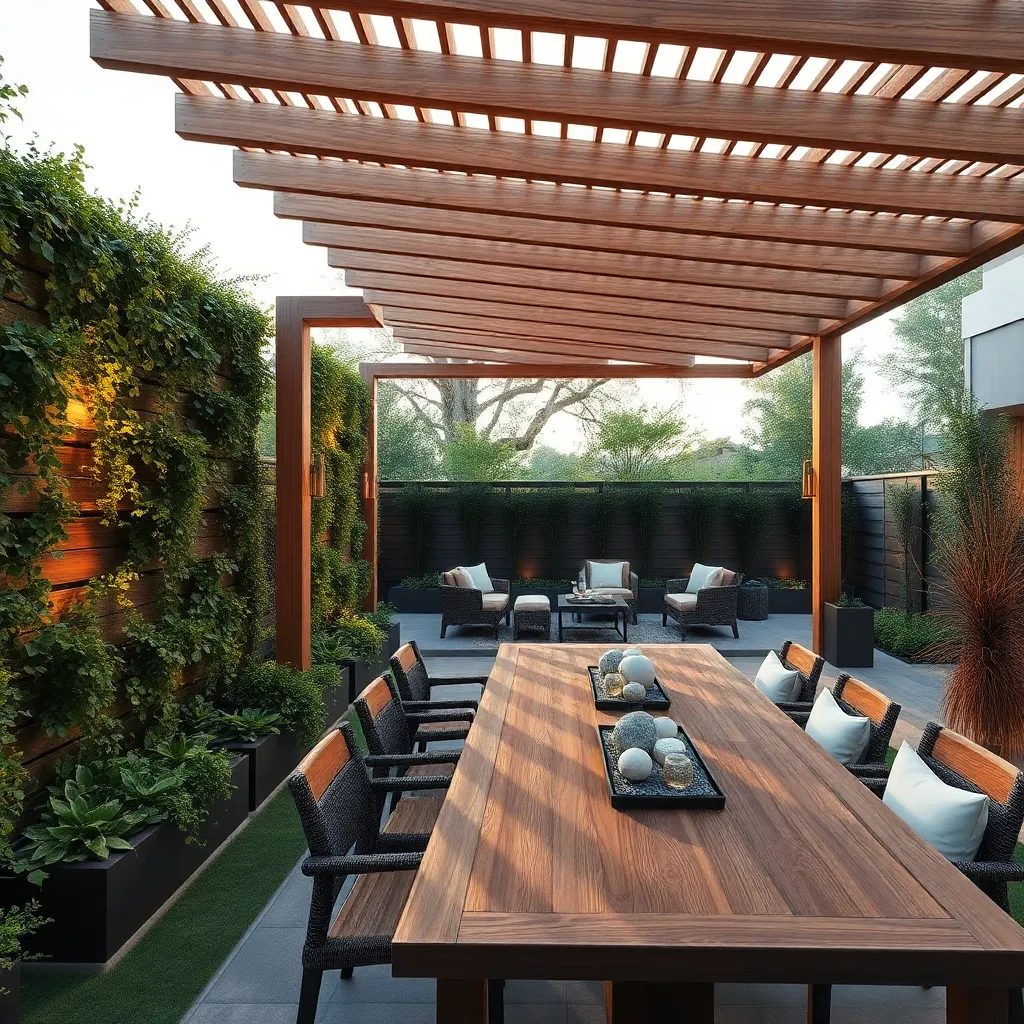
Transform your outdoor dining space with a vertical garden wall, which not only enhances the aesthetic appeal but also maximizes limited space. Begin by selecting sturdy materials like weather-resistant wood or metal for the frame, ensuring it can support the weight of your plants. Use modular planters or pocket systems to allow easy swapping of plants, catering to both beginners and those seeking more complex arrangements. Choose a variety of plants such as herbs, succulents, or flowering vines, which thrive well in vertical setups and add lush greenery to your dining area.
For a more advanced setup, consider incorporating an irrigation system to keep your garden wall thriving with minimal effort. Drip irrigation systems are particularly effective, offering controlled water delivery directly to the plant roots. Ensure your vertical wall is positioned to receive optimal sunlight—ideally facing south or west in most regions. This practical installation not only provides a stunning backdrop for your outdoor meals but also contributes to a serene atmosphere, making it an inviting space for gatherings.
Use Multi-Level Decking Surfaces
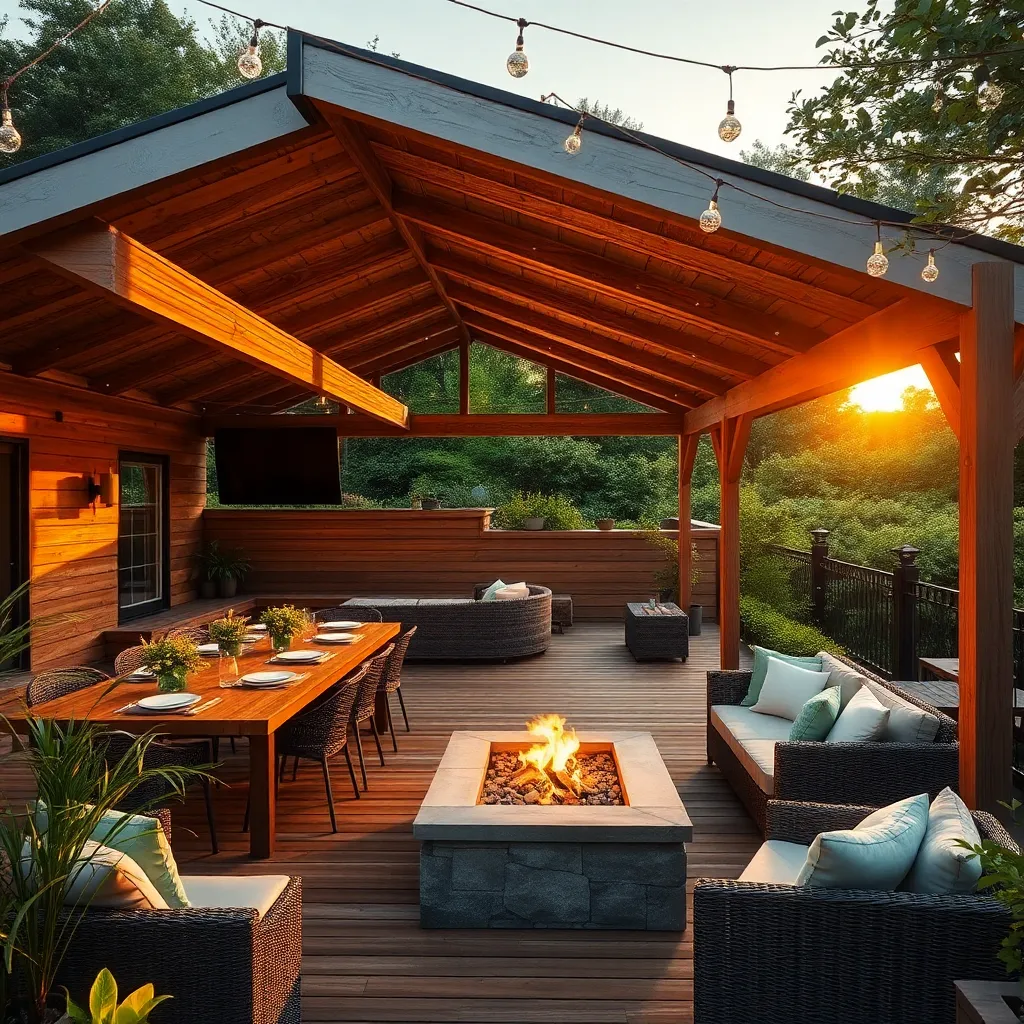
Creating multi-level decking surfaces can transform your outdoor dining area into a visually dynamic and functional space. By incorporating various levels, you can define different zones for dining, lounging, and cooking, making your outdoor area feel like an extension of your home. Consider using durable materials like composite decking or pressure-treated wood, which require minimal maintenance and can withstand diverse weather conditions. Beginners might start with simple two-level designs, while experienced DIYers can explore more intricate layouts with built-in seating or planter boxes.
For a seamless transition between levels, design wide steps or ramps that are safe and easy to navigate. Use contrasting colors or materials for each level to enhance visual interest and guide guests through the space. Lighting is crucial for safety and ambiance, so consider integrating solar-powered lights along the steps or railings. For those with advanced skills, incorporating features like a pergola or retractable awning on one of the levels can add shelter and style, providing shade and protection during inclement weather. These elements not only enhance functionality but also elevate the overall aesthetic of your outdoor dining area.
Incorporate Outdoor Heating Solutions
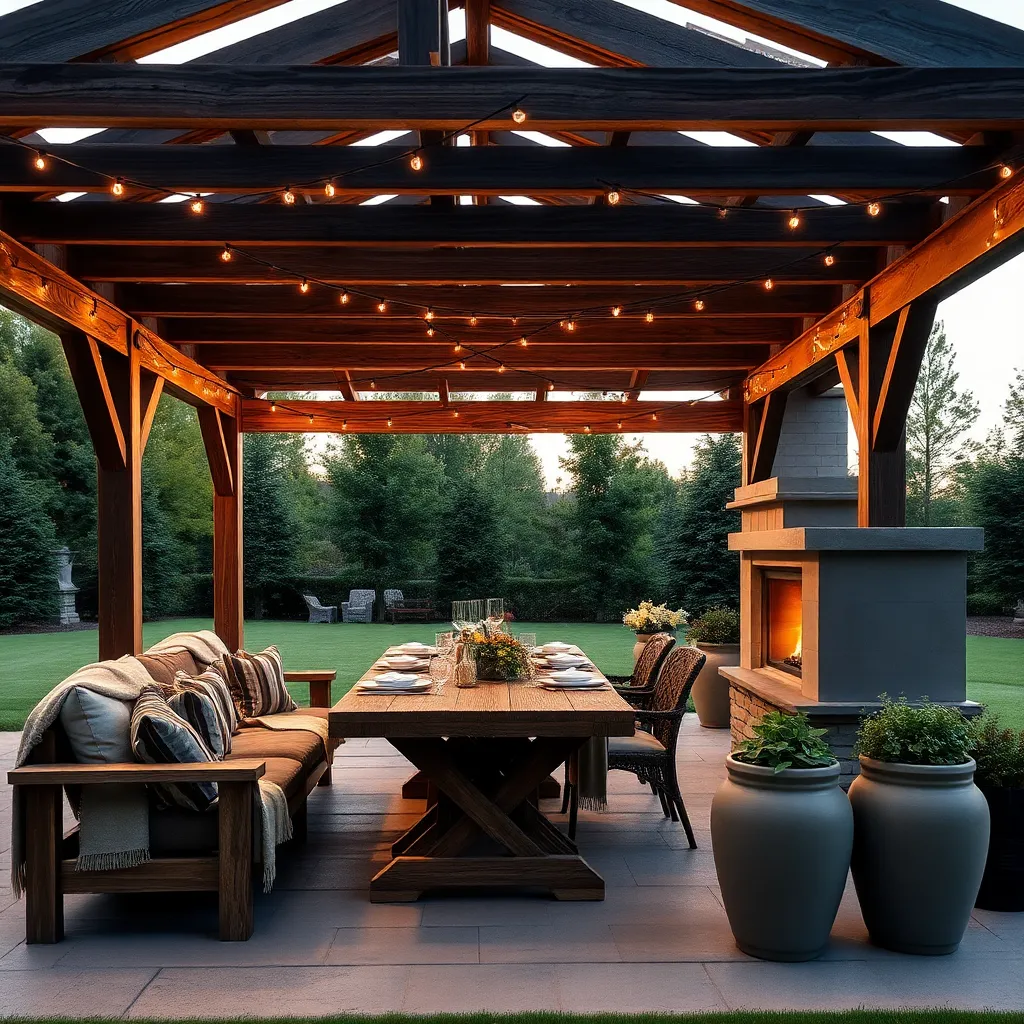
To create a cozy atmosphere for your outdoor dining area, incorporating outdoor heating solutions can make a significant difference, especially during cooler months. Patio heaters are a popular choice and come in various styles, including freestanding, tabletop, and wall-mounted options. Consider using propane or electric heaters, as they are easy to install and provide efficient warmth. For a more permanent solution, you might explore installing a built-in fireplace or fire pit, which can also serve as a stunning focal point in your outdoor space.
Think about materials that complement your existing outdoor decor; for instance, a sleek stainless steel heater can match modern furniture, while a rustic stone fire pit suits a more traditional setting. When planning your layout, ensure there’s enough clearance around heaters for safety and ventilation. For advanced projects, consider integrating heaters into a pergola or gazebo structure with additional weatherproofing, such as retractable screens or curtains, to enhance comfort and usability throughout the year. This thoughtful approach not only extends the usability of your space but also enhances its aesthetic appeal.
Integrate Natural Shade Elements
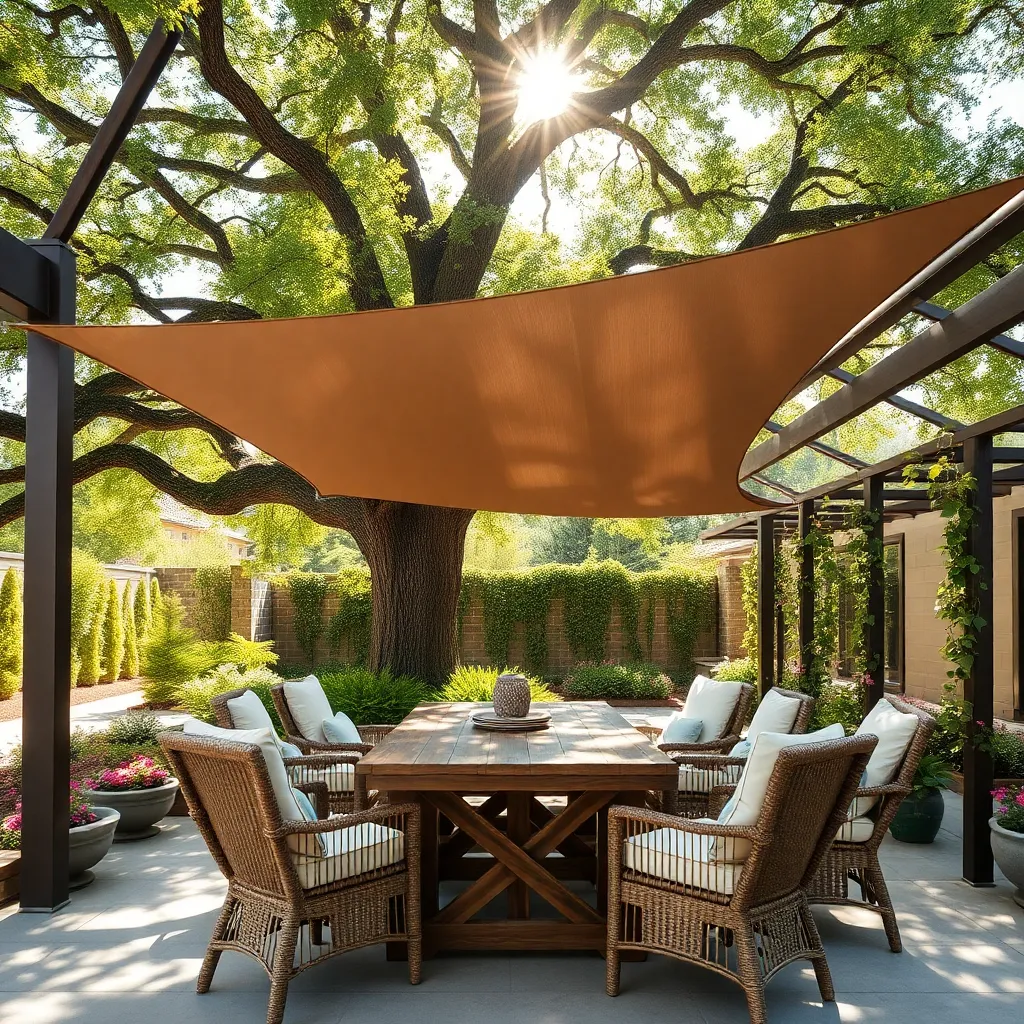
Enhancing your outdoor dining area with natural shade elements not only provides relief from the sun but also adds a touch of nature to your space. Consider planting fast-growing trees like maple or birch, which can offer ample shade within a few years. For a more immediate solution, install a pergola and adorn it with climbing plants such as wisteria or grapevines. These plants will gradually create a lush canopy, providing both beauty and shade.
For a more dynamic design, use bamboo screens or lattice panels to create semi-permanent shaded areas. These can be easily adjusted or repositioned based on the sun’s direction and your dining needs. Opt for durable materials like cedar or teak, which are weather-resistant and age gracefully outdoors. If you’re looking to experiment, consider layering different natural elements by combining trees with pergolas or panels for a unique and customizable shade solution.
Define Dining Areas with Pavers
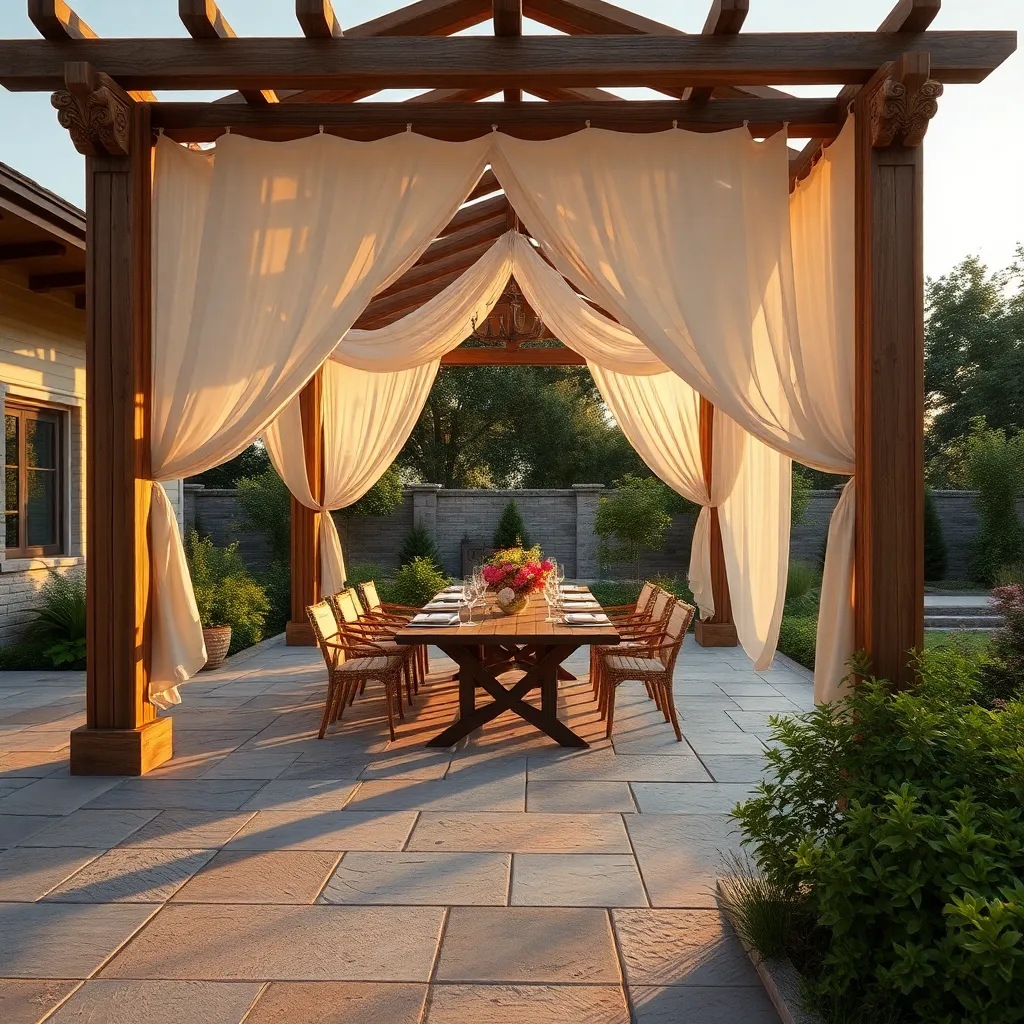
Transform your outdoor space into a defined dining area by using pavers to create a dedicated and stylish section. Choose durable materials like concrete, stone, or brick pavers that can withstand various weather conditions and offer a long-lasting foundation. A well-planned layout can include a simple square or rectangle design for beginners, while more experienced DIYers might try intricate patterns like herringbone or basket weave to add visual interest.
To enhance the ambiance, consider incorporating borders with contrasting paver colors or using decorative gravel to frame the dining space. Ensure the ground is level before laying pavers by using a gravel and sand base for stability and proper drainage. Adding comfortable seating and a sturdy table will complete the look, and for an advanced touch, integrate built-in lighting along the edges of the pavers for evening gatherings. These steps create a welcoming and functional outdoor dining area that can be enjoyed year-round.
Opt for Compact Barbecue Stations
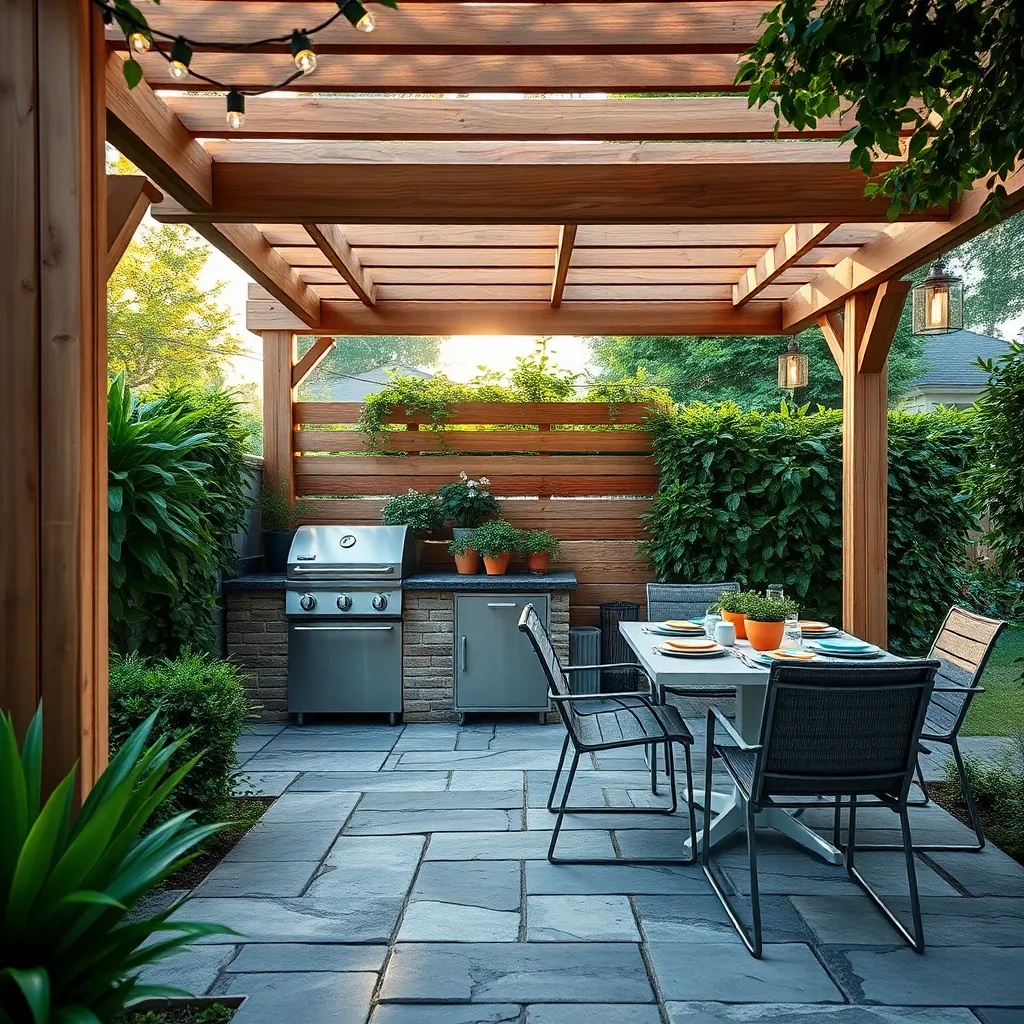
Compact barbecue stations are an excellent choice for maximizing space while still enjoying outdoor cooking. Opt for a setup that includes a small grill, a counter for food prep, and integrated storage for utensils and supplies. Use durable materials like stainless steel or weather-resistant wood to ensure longevity. A setup of approximately 5-6 feet in length should provide ample space for basic needs without overwhelming your outdoor area.
Consider incorporating a fold-down table or extending countertop to further enhance functionality without sacrificing space. For a more advanced touch, you can add built-in lighting or a small retractable canopy to protect the station from the elements. Prioritize versatility and ease of use to ensure your barbecue station becomes a cherished component of your outdoor dining experience. When planning your layout, remember to allow for adequate ventilation and safety clearances around the grill area.
Incorporate Water-Resistant Storage Units
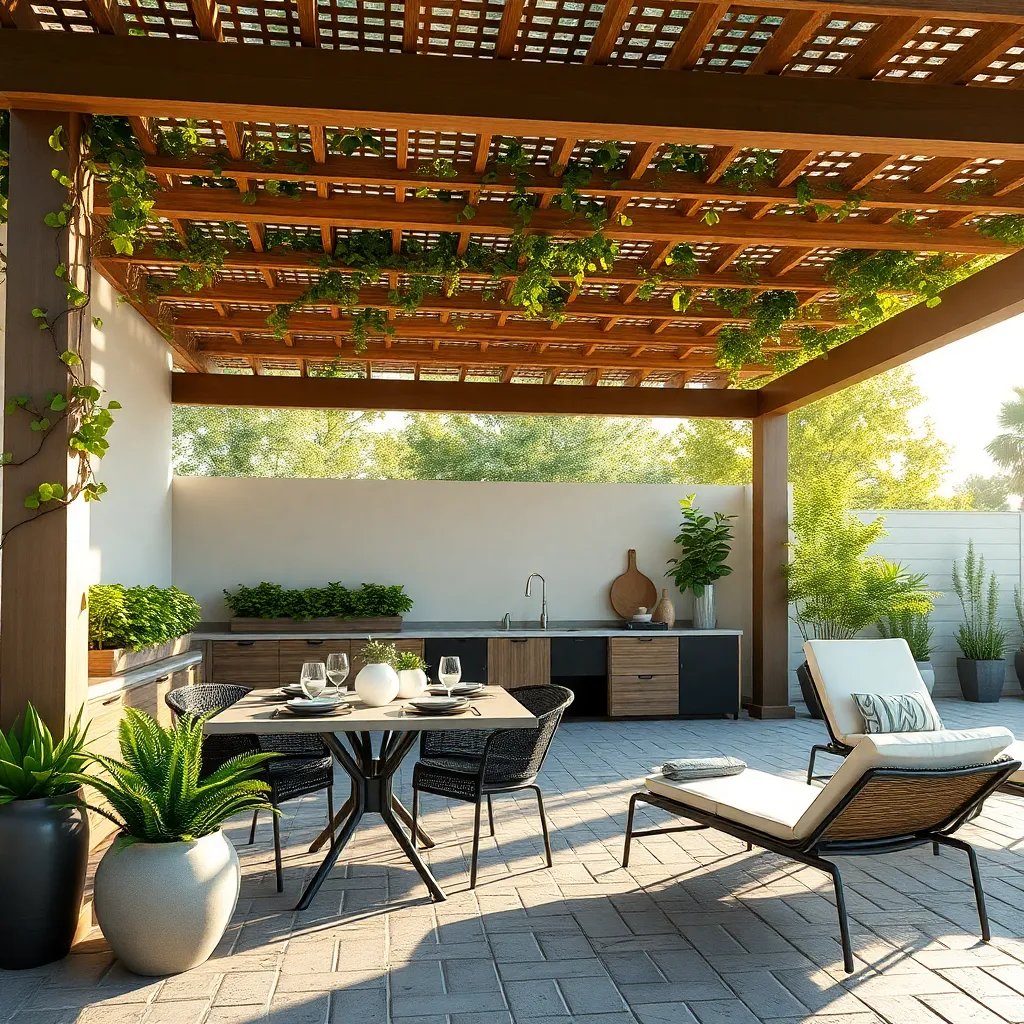
To ensure your outdoor dining space remains clutter-free and organized, it’s essential to incorporate water-resistant storage units. Choose materials like high-density polyethylene (HDPE) or treated wood, which are both durable and weather-resistant. These storage units can be easily integrated under benches or as stand-alone cabinets, providing a practical solution for stowing away cushions, tableware, or barbecue tools. Opt for units with a tight-sealing lid or doors to keep your items safe from rain and moisture.
For those looking to add a touch of style, consider storage units with additional design elements like built-in seating or decorative lattice panels. These not only enhance functionality but also contribute to the overall aesthetic of your patio. Advanced gardeners might explore custom-built options, allowing you to tailor dimensions and finishes to perfectly fit your space. Remember to position the storage units in shaded or partially covered areas to extend their lifespan and maintain their appearance.
Conclusion: Creating Beautiful Outdoor Spaces
In exploring the ’14 Outdoor Dining Ideas for Your Next Project,’ we delved into creative concepts ranging from cozy backyard setups to elegant patio arrangements, each designed to foster connection and create memorable dining experiences. We discussed the importance of ambiance, the role of lighting in setting the mood, and how incorporating elements like nature and themed decor can enhance emotional bonds. The article also highlighted practical tips on space optimization, furniture choices, and incorporating personal touches to make each dining experience unique and meaningful.
As your next actionable step, consider picking one idea that resonates most with your relationship goals and start planning an outdoor dining experience this weekend. Whether it’s a simple picnic under the stars or a more elaborate themed dinner, the key is to prioritize time together.
Remember to save this article as a handy guide for future reference! By bookmarking it, you’re investing in a resource that will continue to inspire and support you in nurturing your relationships. As you implement these ideas, know that every effort you make toward strengthening your connections today lays the foundation for a successful and fulfilling relationship tomorrow.
